Go Behind the Scenes of Beloved Cult TV Classic Bewitched

When Bewitched first aired in 1964, people didn’t expect the strange show to be so impactful. However, the quirky series was immensely popular and revolutionary in shaping the fantasy sitcom genre. While fans loved the show for its goofy humor, charming characters and outrageous magic displays, there was more to the sitcom than met the eye. Behind the scenes, both the wonder and chaos transferred over to real life, thanks to incredible film magic and terrifying curses. Let’s take a look behind the scenes of the beloved cult TV classic known as Bewitched to uncover the truth.
Samantha’s Nose Twitch Was Movie Magic
You can’t have Bewitched without Samantha’s iconic nose wiggle. However, you may have thought special effects were too limited at the time to help with Elizabeth Montgomery’s magical twitching. In truth, the actress wiggled her nose as best she could, but the wiggling was enhanced with the help of a bit of movie magic.

By speeding up footage of Montgomery wiggling her upper lip — and tossing in that signature tinkling xylophone noise — the witchy nose twitch was accomplished. Even more fascinating, the nose wiggle wasn’t part of the original script. It stemmed from a nervous twitch that Montgomery experienced during stressful moments in real life. Although the wiggle wasn’t planned, it’s hard to imagine Samantha without it.
The Earliest Episodes Weren’t in Living Color
Bewitched first aired in September 1964, a mere 14 years after color television was introduced to the American public. Naturally, producers who didn’t yet know if the show would succeed were unwilling to invest in the extra cost to air the show in color. As a result, the earliest seasons of Bewitched were in black and white.

However, the show enjoyed enormous success, and studio executives became more willing to change their opinions on the coloring. Additionally, the growth of film technology made the option more accessible and more intriguing to audiences. They switched to color film for production in 1966. Overall, 74 of the show’s episodes were in black and white, and the other 180 were in color.
The Reason Dick York Ducked Out
Whatever happened to Dick York? The actor who played Darrin, Samantha’s husband, vanished from Bewitched in 1969. Although the role was filled by Dick Sargent, fans weren’t cued in on the reason for Dick York’s departure. This led to wild theories about chaos and on set drama between the actors, but York’s decision to leave was related to concern for his health.
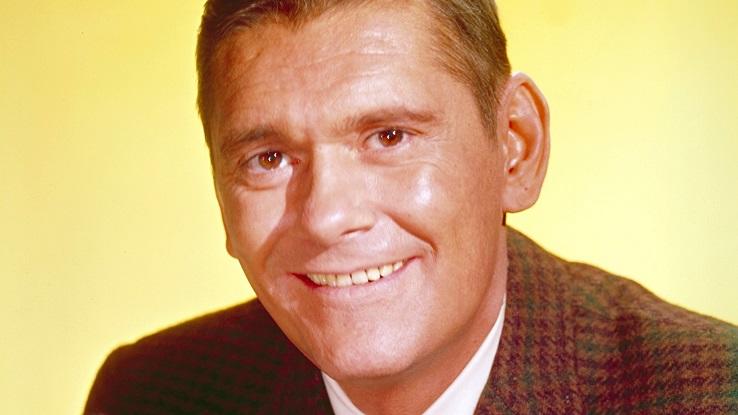
In 1959, when York was filming They Came to Cordura (1959), he suffered a severe back injury on set that led to chronic and lasting pain. While working on the fourth season of Bewitched, this pain became unbearable, and he began to abuse painkillers to cope. After suffering a frightening seizure on the set of Bewitched, York decided to call it quits.
Agnes Moorehead Hated York’s Replacement
When Dick York was replaced with Dick Sargent, Agnes Moorehead — Samantha’s sassy, mortal-hating mother — threw a fit. She was extremely close to Dick York, sharing a unique bond with the actor that he didn’t have with his other cast members. She was devastated when York left, and when Sargent showed up, she was completely unhappy about his presence.
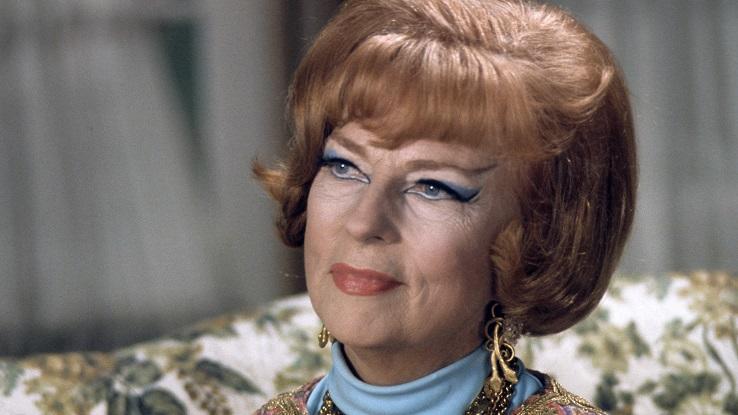
Moorehead was extremely cold toward Sargent and frequently had a nasty attitude when shooting with him. Her passive-aggressive behavior got so unbearable at times that Sargent occasionally broke down in tears. Fortunately, he had a positive relationship with Montgomery, and she ended up providing crucial support for him on and off the set.
Montgomery and Sargent Got Along Great
Although Moorehead was frustrated with York’s absence from the show, Montogmery connected with Sargent far more than she had with York. She was never Dick York’s biggest fan, and they didn’t always get along while shooting. For Montgomery, Sargent was a positive replacement, and they enjoyed friendly and warm communication with one another.

Montgomery also proved to be significant support for Sargent offscreen. Nearly 20 years after the show concluded, Sargent came out as gay. During the 1992 Los Angeles Gay Pride Parade, he led the parade as the co-Grand Marshall. Can you guess who his partner Grand Marshall was? Yep — Elizabeth Montgomery.
Elizabeth Was Pregnant — A Lot
Although her real-life pregnancies certainly weren’t scripted, Montgomery’s onscreen pregnancies were far from fake. In fact, she was pregnant a whopping three times during the shooting of Bewitched. The first pregnancy was hidden by baggy clothing, but the subsequent two pregnancies were written into the script.

Montgomery continued to shoot while her belly expanded. Her first pregnancy occurred during season one, and the costuming team tailored special clothing to disguise the fact that she was pregnant. Samantha’s two children — Tabitha and Adam — were written into the script to explain her following pregnancies. The adorable additions to the show brought some charming reality to the fantastical sitcom.
They Cast Multiple Twins as Tabitha
It can be tough to film Hollywood movies and TV shows that feature uber-young children. Child labor laws, fussy infants and other youth-based complications mean that casting directors must be very careful about who they choose for a child’s role. Casting twins is one way to ensure that no child is overworked or underprepared.

We saw it work smoothly on Full House, but did you know Bewitched cast three sets of twins as Tabitha? While the original baby was a solo act, twins were cast as Tabitha got older. There were Heidi and Laura Gentry, then Tamar and Julie Young, and, finally, Diane and Erin Murphy, who played the role of Tabitha until the show’s conclusion.
Montgomery Wasn’t the First Choice for Samantha
It’s hard to imagine anyone else in the quirky, hilarious and charismatic role of Samantha Stephens, other than Elizabeth Montgomery. However, Montgomery wasn’t the first choice to play the role. Rather, ABC had their eyes on two-time Tony award winner Tammy Grimes. The studio was hopeful the actress — who looks a bit like Montogmery — would take the role.

Instead, Grimes opted to pursue her own path. She launched The Tammy Grimes Show, which unfortunately dissolved after a short month. Meanwhile, Montgomery and her producer husband, William Asher, leapt at the chance to work alongside one another. While Asher signed on to direct Bewitched, Montgomery scored the iconic role of Samantha.
Asher and Montgomery Had a Tumultuous Relationship
Montgomery and Asher signed onto Bewitched together, but they were separated by the time it ended. Montgomery was married two times before Asher, both times to emotional abusers and alcoholics. When she fell in love with Asher, he seemed to be better than her former husbands, yet he soon began to cheat on her.

After Asher pursued actress Nancy Fox, Montgomery pursued a romantic interest of her own. She fell head-over-heels for Richard Michaels, a producer and director for Bewitched. Unfortunately, he was already married, and their affair led to his divorce from his wife. Their relationship lasted roughly two years, as Asher regretfully begged for Montgomery’s attention.
Samantha Used to Be Cassandra
Before she was Samantha Stephens, she was Cassandra. Writer Sol Saks was smitten with the name Cassandra while he was seeking an actress to fill the killer role of the witch. He was set on Tammy Grimes as the star, but she turned down the role, and Montgomery was not happy with Saks’ name choice.
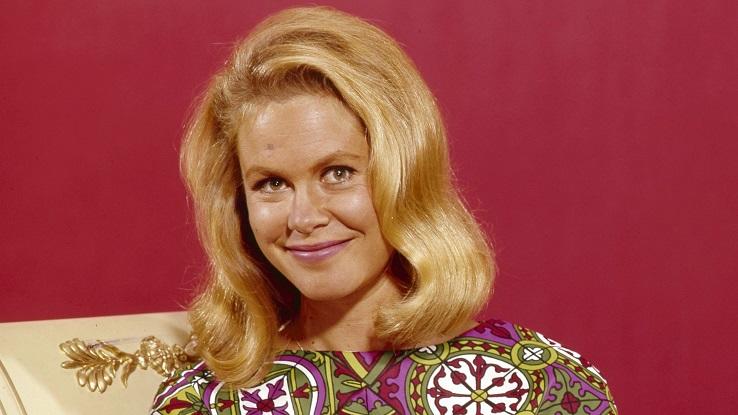
She felt the name Cassandra carried bad energy with it. Believe it or not, Montgomery threatened to walk away from the show if they didn’t change the character’s name. Dramatic? Maybe. However, Samantha certainly seemed to fit the confident witch.
Special Sets and Scripts Were Designed for York
Speaking of adapting for actors, Dick York was filming Bewitched when the chronic pain from his back injury got worse. As a result, the set makers and scriptwriters always had to be prepared for York to be having a bad back day. What did this look like on set?

Every set with York had to be mindfully crafted, ensuring he could sit or lie down, if necessary. There were also several backup scripts written that were Darrin-less, just in case he couldn’t manage to film. The show ultimately made some incredible adaptations to try to make filming easier for York before he had to call it quits.
Montgomery Almost Quit After Season Five
By the end of the fifth season of Bewitched, Montgomery was ready to throw in the towel. By then, she had three children she was trying to raise while shooting the show. Plus, she wasn’t merely a supporting character, so she had to be in every single episode for the show to function.

Montgomery told producers that after season five wrapped up, she would be out the door. However, they weren’t ready for the highly-rated show to end, so they rewrote her contract to give her higher pay and partial ownership of the show. It was hard for her to refuse that kind of money in the ’60s.
A Christmas Episode Was Written by Black Students
The episode Sisters of Heart came to be, thanks to 26 African-American high school students from Jefferson High School in L.A. After they were invited to tour the set of Bewitched, the group — many of whom couldn’t read or write — created the episode about tolerance, unity and fighting prejudice.

Sisters of Heart featured Samantha casting a spell on Darrin’s racist client causing him to see himself and those around him as black. These days, the episode would be scorned for its use of blackface. Nevertheless, the episode was praised at the time for its message of tolerance. The episode was also awarded the Governors Award at the 1971 Emmys.
Montgomery Played More Than One Character
Although Montgomery is most recognizable for her role as the squeaky-clean Samantha Stephens, that wasn’t her only role on Bewitched. She also played the hardcore-hippie Serena, Samantha’s cousin. Montgomery could be difficult to recognize with her usual blonde hairstyle manipulated and her heavier makeup, but she looked enough like herself for crew and cast members to know it was her.

However, not everyone in the audience got the memo. During the ending scroll of credits, the role of Serena was credited to a Miss Pandora Spocks (a play on “Pandora’s Box”). Although the resemblance between Samantha and Serena was uncanny, fans began to write letters of praise to Pandora. Montgomery must have enjoyed that lark!
Stagehands Made the Magic Happen
During the years of filming Bewitched, there was no such thing as CGI, green-screening or any of the revolutionary film technology that so many fantasy and sci-fi shows employ today. Instead, a skilled group of stagehands — plus some incredible set builders and film editors — brought most of Samantha’s magic spells to life.

If Samantha needed to tidy a room with magic, Montgomery had to lift her arms up as the director called “Cut!” Then, she would wait for speedy stagehands to clear the clutter out of the room. Tricks like that as well as manipulating the speed of the film and hanging “levitating” objects with wires were what gave the show its magical qualities.
Samantha’s Nosy Neighbor Was Hiding Something
True fans of Bewitched should know Alice Pearce for her role as Samantha’s hilarious nosy neighbor, Gladys Kravitz. While the goofy role seemed to come to Pearce with ease, she was quietly battling ovarian cancer behind the scenes. When she accepted the role of Kravitz, she understood that her illness was terminal, but she didn’t tell anybody else.

Despite the severe nature of her cancer, Pearce was able to keep her illness under wraps from the entire Bewitched cast and crew, and she starred in a total of 30 episodes until she passed away in 1966. She received an Emmy posthumously for her stellar work on the show.
The Show Earned Its Own Curse
In Hollywood, there are certain shows, roles and films that seem to carry curses along with them for the cast and crew involved. While Bewitched was full of spells and magic, one curse seemed to manifest itself in the real lives of the cast members. Pearce was the supposed curse’s first victim, but she wouldn’t be the last.

A large number of cast members passed away in rapid succession from cancer, heart disease and other illnesses at relatively young ages. This included Agnes Moorehead, Dick Sargent and the show’s star, Elizabeth Montgomery. Of course, their deaths may have merely been a matter of coincidence, but that hasn’t stopped the whispered rumors of a curse.
Montgomery Was a Fierce AIDS Activist
Montgomery was a mystic presence onscreen, but even more so offscreen. She kept a great majority of her personal life veiled from the eyes of reporters. However, despite her shielded presence beyond the camera, she was an extremely passionate advocate for gay rights. Along with this, she was an activist in the face of the AIDS crisis.
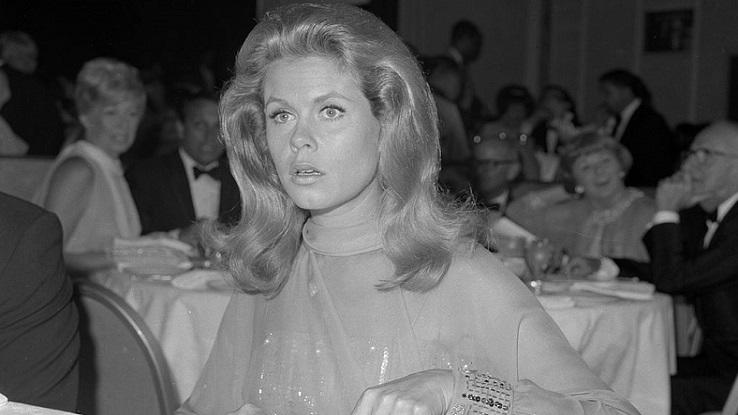
During the worst of the AIDS crisis, Montgomery volunteered a great deal of her time and funds to support AIDS activism. She even called out the lack of action from President George Bush at the Eighth International Conference on AIDS, publicly stating, “I don’t think President Bush is doing anything…I’m not even sure if he knows how to spell ‘AIDS.'”
The Actors Were Often Drunk While Filming
Are you one of the fans who noticed how frequently the cast of characters drank during the show? Well, that was real alcohol. The actors and actresses often got drunk during filming. Rather than turning the cameras off and sending everyone home to clean up, they kept the cameras rolling. Many aired scenes were recorded while the cast was intoxicated.

Once children came onto the show, the rules became a little less lenient. After all, they couldn’t have a bunch of drunk actors running around and setting a bad example for the young stars. In place of adult beverages in scenes featuring alcohol, the cast was encouraged to drink iced tea that resembled their favorite forbidden beverages.
The Cast Also Smoked Like Crazy
In addition to their tendency to get drunk onset, the cast also smoked frequently. The genuine dangers of smoking cigarettes were becoming relevant medical conversations at the time. However, any whisper of concern didn’t slow the actors down. They were all heavy smokers and were almost never found without a cigarette between their fingers.

Elizabeth Montgomery was a chain smoker, and Dick York blew through three packs of cigarettes a day. This phenomenon of onset smoking was confusing for the young actress who played Tabitha. In 1997, Erin Murphy told bewitched.net, “I remember thinking ‘If smoking is bad, then why is everybody around here doing it?'”
Montgomery’s Father Refused a Role
Before anyone knew Elizabeth Montgomery’s name, they knew about her famous actor/producer father, Robert Montgomery. With nearly 50 film credits to his name, he cast quite a shadow, and Elizabeth spent much of her young adult life attempting to crawl out of it. When she scored the role of Samantha, she got her chance at independence.

Robert was invited to be on Bewitched as a narrative voice/Samantha’s father in the first season. It’s not clear whether he simply wasn’t interested or he respected his daughter’s budding career, but he declined the offer. As Bewitched skyrocketed in terms of popularity, Elizabeth became the star of an era, surpassing her father’s fame in the 1960s and 70s.
Agnes Moorehead Had a Magical Brooch
One feature of Agnes Moorehead’s wardrobe was her trademark: her starburst brooch. The magnificent piece of jewelry was a central part of her costume, which consisted entirely of clothing from her own wardrobe. The 8.5-carat diamond-brooch was assigned magical abilities within the bounds of the Bewitched plot.

One of the biggest fans of Moorehead’s brooch was her onscreen daughter, and often remarked on the beauty of the piece when Moorehead wore it. After Moorehead passed away in 1974, she left the stunning brooch to Montgomery in her will. While the piece may not have had real-life powers, it was certainly a magical gesture on Moorehead’s part.
One of the Writers Was Double-Crossing Bewitched
Around the same time that Bewitched came out, an extremely similar sitcom hit the primetime tube: I Dream of Jeannie. The plot revolved around a blonde-haired, magical woman who was smitten with a mortal. Sound familiar? Although the genre of fantastical/magical shows was popular at the time, there may have been more to the story with I Dream of Jeannie.

As it turned out, one of the writers from Bewitched was also working on I Dream of Jeannie — behind the other writers’ backs. James S. Henerson was promptly fired from Bewitched once his fellow writers realized what he was doing. However, many of the parallels between the two shows might be attributable to Henerson’s two-timing.
The Release of the Show Was Protested
Releasing a show about a female witch in the mid-20th century wasn’t exactly a simple feat. Extreme religious groups, Southern states and overprotective parents chose to boycott Bewitched before it even aired. Why? They believed it would promote Devil worship, black magic and the practice of witchcraft. These critics began to place the characters’ behaviors under a lens.
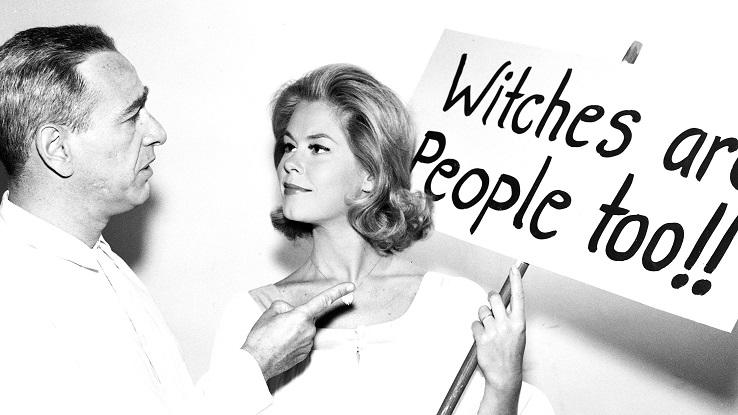
One big shocker: Samantha was scrutinized when she revealed the date of her birth as June 6th (6-6). Those who believed the show was for Devil worshippers thought the dual sixes was an occult message. However, these days, television is full of fantasy, and people wouldn’t bat an eye at the emergence of a show like Bewitched.
The Cast Appeared on The Twilight Zone
Where did the actors end up when they weren’t on Bewitched? Many of them seemed to walk straight into The Twilight Zone. The majority of actors/actresses on Bewitched also starred in an episode of The Twilight Zone at one point or another. This group included Elizabeth Montgomery, Dick York, Agnes Moorehead, Alice Pearce and Sandra Gould.
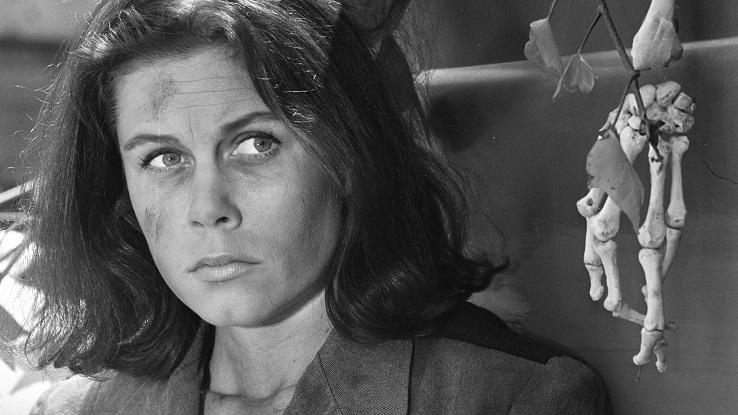
One of the most notable appearances was Montgomery’s starring role in the post-apocalyptic, 66th episode of the show, Two. Dick York was in the second season in A Penny for Your Thoughts, during which his bank teller character gained the ability to read minds. Although most people know these actors because of Bewitched, The Twilight Zone expanded their realm of magic.
Sol Saks Borrowed from Other Films
Although Bewitched is an engaging and unique series, the original pilot was the furthest thing from an original concept. The show’s writer, Sol Saks, stole structure from both I Married a Witch and Bell, Book and Candle. Saks unapologetically admitted the Bewitched pilot was essentially modeled after the plot of those two films.

Fortunately, Saks didn’t have to worry about any legal repercussions. Columbia had produced both of the films, and they also owned Screen Gems, which was the production company behind the creation of Bewitched. Sol Saks was extremely fortunate to have those legal safeguards in place.
The Real-Life Aunt Clara Collected Doorknobs
Aunt Clara, played by Marion Lorne, is one of the sole characters on Bewitched that seemed to be unconditionally lovable, mostly because of the quirky nature of her personality, which made her a total mess most of the time. One of the notable quirks of Aunt Clara was that she had a strange obsession with doorknobs.
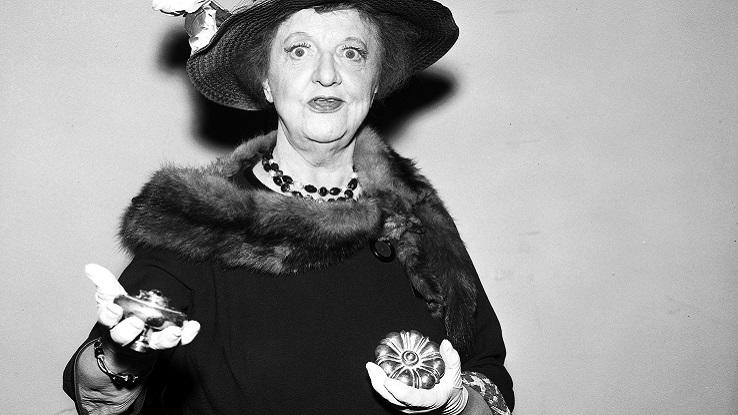
As it turned out, Lorne was just as smitten with doorknobs. In fact, that’s where that inspiration came from for Aunt Clara’s character. Aside from being an actress, Lorne was a doorknob connoisseur and collected them for fun. At one point, she had more than 1,000 different doorknobs in her collection. How’s that for a unique hobby?
JFK’s Assassination Happened During the Pilot’s Rehearsal
Many people remember November 22, 1963, as the day that John F. Kennedy was assassinated. However, members of the Bewitched cast also remembered it for another reason. It was the day they kicked off rehearsals for the pilot. Although the whole nation was distraught, Elizabeth Montgomery and William Asher were particularly heartbroken by the event.

Herbie J. Pilato told Fox News, “They were friends with JFK… Asher produced Kennedy’s birthday bash, where Marilyn Monroe sang ‘Happy Birthday, Mr. President.’ It was a very hard time for everybody.” While the news devastated the cast and crew, they eventually resumed rehearsals and released the show’s pilot on September 17, 1964.
B.Y.O. Costuming: The Bare Minimum Wardrobe Department
It’s difficult to imagine any of your favorite big-name television shows without a wardrobe department. After all, costuming is a big deal. They wouldn’t honor it at award shows if it wasn’t! However, the wardrobe department for Bewitched was so simple that it was nearly nonexistent. No designer hand-picked any costumes for the show.

Instead, supporting members of the cast, even those with significant roles, were asked to supply their own character’s clothing. From there, the wardrobe department would simply clean, iron and return their clothing to them. It’s strange to imagine that such a magical — and successful — show wouldn’t supply costumes for all of its cast members.
Elizabeth Montgomery Almost Quit Acting Before Bewitched
Remember how Montgomery got involved with several manipulative men? Her first husband, Fred Cammann, was one of them. He was extraordinarily wealthy and wanted her to quit acting to start a family with him. However, she was an actress (not a housewife) at heart, so she refused.

Can you imagine what would have happened if she had quit before Bewitched? They would have found another actress, but would it have been the same charming, endearing, hilarious show everyone knows and loves? Fortunately, years later, William Asher encouraged her abilities and pushed her to remain in the industry, leading to her starring role in Bewitched.





